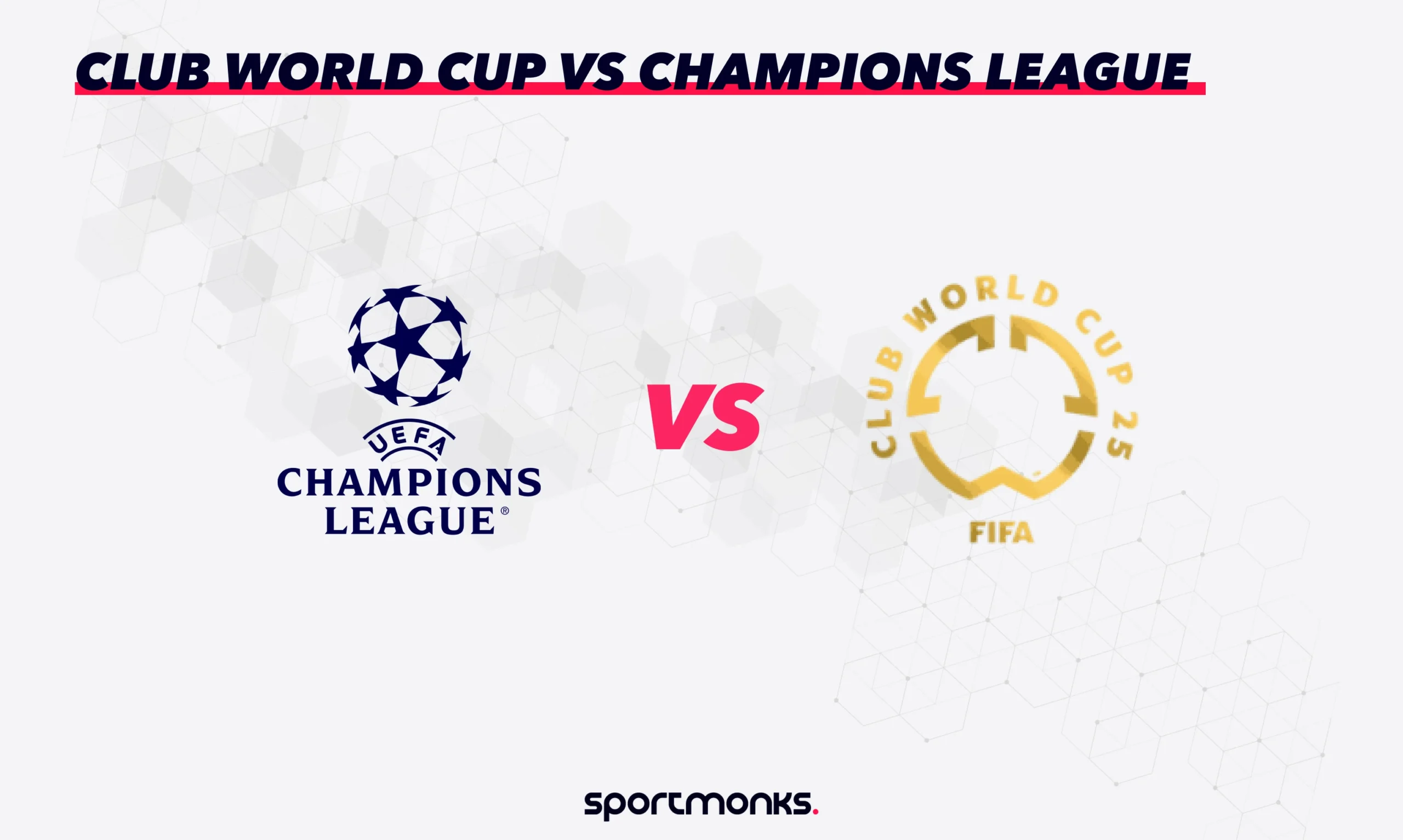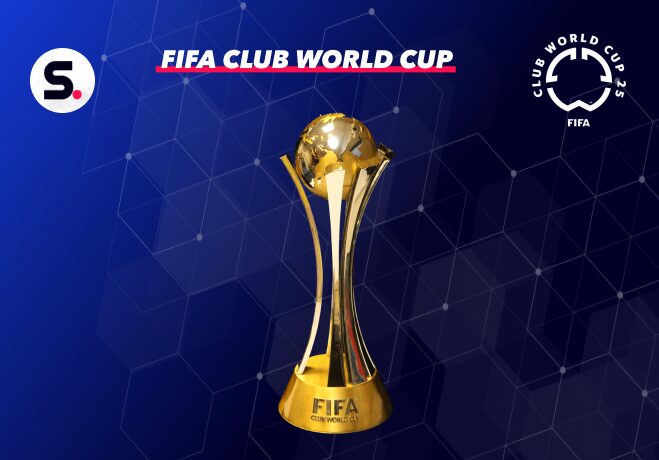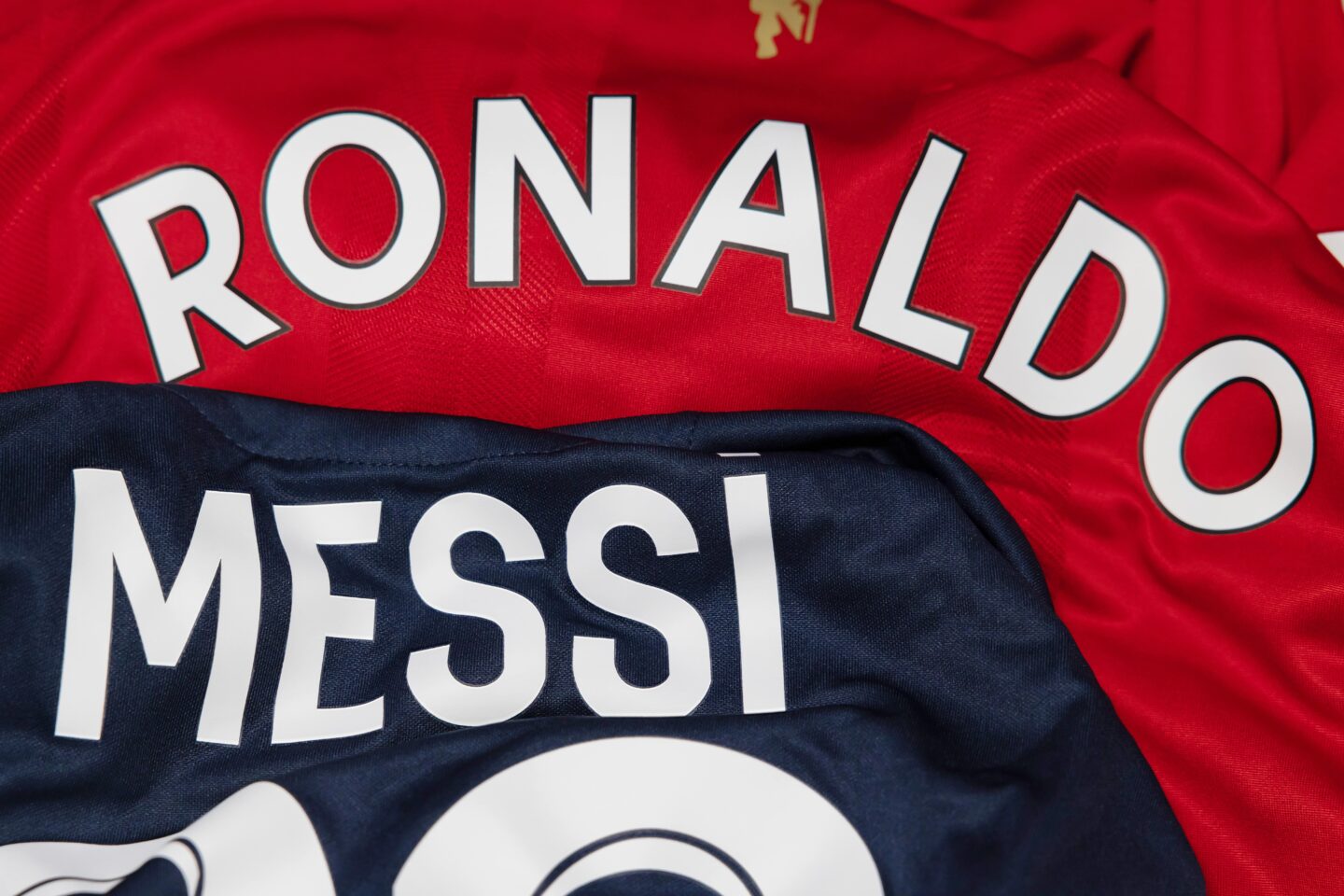
Contents
Historical background
UEFA Champions League
The UEFA Champions League started in 1955. It was first called the European Champion Clubs’ Cup and was inspired by the South American Championship of Champions. The aim was to find the best football club in Europe.
The first match was on 4 September 1955 between Sporting CP and Partizan, ending in a 3–3 draw. Real Madrid dominated in the early years, winning the first five tournaments.
In 1992, the tournament was renamed the UEFA Champions League. It introduced a group stage and allowed more clubs from the top European leagues to join. These changes made the competition tougher and more popular around the world. Today, it’s seen as the top club football tournament in Europe.
FIFA Club World Cup
The FIFA Club World Cup was launched in 2000 in Brazil. Its purpose was to bring together the champion clubs from all six of FIFA’s continental confederations. The first edition featured eight teams, including Real Madrid and Manchester United. Corinthians won the title.
Due to financial and organisational problems, the tournament was paused after the first edition but returned in 2005. It replaced the Intercontinental Cup, which had matched the best clubs from Europe and South America since 1960. From 2005 to 2023, the Club World Cup was an annual club competition held every year and usually included seven teams in a knockout format.
In 2025, the club contest competition expanded to include 32 teams and is now held every four years, like the FIFA World Cup. This new format gives more clubs from around the world a chance to compete for the title of world champion, increasing both its reach and competitiveness.
Tournament structure and format
Both the UEFA Champions League and the FIFA Club World Cup have changed their formats over time to make the competitions more exciting and globally appealing.
UEFA Champions League (2024/25 season)
The 2024/25 season brings a new format for the UEFA Champions League:
– Single league stage: Instead of the usual group stage, 36 teams now compete in one big league table.
– Match schedule: Each team plays eight matches against eight different teams (four at home and four away).
– Points system: A win gives three points, and a draw gives one point.
– Progression:
– The top eight teams automatically move on to the Round of 16.
– Teams placed 9th to 24th play two-legged play-offs to win the remaining eight spots in the Round of 16.
– Knockout rounds: From the round of 16 onwards, the tournament uses the usual knockout format, ending with the final.
This new setup is designed to create a wider mix of matches and keep fans engaged throughout the league stage.
FIFA Club World Cup (2025 edition)
The 2025 edition of the FIFA Club World Cup features major changes and a larger number of teams:
– More teams: The tournament now includes 32 clubs from FIFA’s six continental confederations (UEFA, CONMEBOL, CONCACAF, CAF, AFC, and OFC).
– Group stage:
– Teams are split into eight groups of four.
– Each team plays three matches in a round-robin format (one match against each team in their group).
– The top two teams in each group move on to the knockout stage.
– Knockout rounds:
– Includes the Round of 16, quarter-final stage, semis, and the final.
– All knockout matches are single elimination.
– If the score is level after 90 minutes, the match goes to extra time and possibly a penalty shootout to decide the winner.
– Schedule: The tournament will run from 14 June to 13 July 2025. The timing is planned to avoid clashing with major domestic leagues.
Qualification criteria
To understand how teams enter the UEFA Champions League and the FIFA Club World Cup, it’s important to look at their qualification systems. These systems reflect how competitive and inclusive each tournament is.
UEFA Champions League (2024/25 season)
The 2024/25 season introduces a new format with 36 teams playing in a single league stage. Teams qualify mainly based on how well they do in their domestic leagues:
– Automatic qualification: Teams that finish in the top places of their national leagues get direct entry. How many teams each country gets depends on UEFA’s country rankings (called coefficients).
– Two qualifying paths:
– Champions path: For league winners from countries that don’t get automatic spots.
– League path: For teams that didn’t win their league but finished high (e.g. second or third) in stronger leagues.
– Play-off rounds: Teams in both paths go through qualifying matches. The winners of these matches earn a place in the league stage.
– Extra places for titleholders: The winners of the previous season’s UEFA Champions League and UEFA Europa League automatically qualify, no matter their domestic league result.
FIFA Club World Cup (2025 edition)
The 2025 Club World Cup is much bigger than before, now with 32 teams from six global football confederations. Qualification is based on results from 2021 to 2024:
– UEFA (Europe): 12 places
– Automatic qualification: Winners of the UEFA Champions League from 2021 to 2024.
– Ranking-based: Other spots go to the highest-ranked clubs based on UEFA’s performance rankings over the four years.
– CONMEBOL (South America): 6 places
– Automatic qualification: Copa Libertadores winners from 2021 to 2024.
– Ranking-based: Remaining places go to top-performing teams in continental competitions.
– AFC (Asia), CAF (Africa), CONCACAF (North & Central America): 4 places each
– Automatic qualification: Winners of their continental championships from 2021 to 2024.
– Ranking-based: Other spots based on overall performance over the four-year period.
– OFC (Oceania): 1 place
– Qualification: Goes to the best-performing club among OFC Champions League winners from 2021 to 2024.
– Host nation (USA): 1 place
– Qualification: Awarded to Inter Miami CF, as the host country’s representative.
Geographic representation and inclusivity
The UEFA Champions League and the FIFA Club World Cup take different approaches to including clubs from around the world. These differences reflect each tournament’s purpose and reach within global football.
UEFA Champions League
The UEFA Champions League is Europe’s top club competition and mainly includes teams from UEFA’s 55 member countries. Clubs qualify based on how well they do in their national leagues, which means the tournament focuses on Europe’s strongest teams.
In recent years, UEFA has tried to make the competition more inclusive. In the 2024/25 season, a record 40 countries were represented across UEFA club competitions, beating the previous record of 36. A key highlight was that clubs from Northern Ireland and Wales reached the league stage for the first time — a big step forward for inclusion in European football.
UEFA is also working off the pitch to promote equality through its FootbALL campaign. This initiative focuses on giving everyone equal chances to take part in football, and on creating a safe, welcoming environment for all players, staff, and fans.
FIFA Club World Cup
The FIFA Club World Cup has a truly global focus, bringing together clubs from all six of FIFA’s continental confederations:
– AFC (Asia)
– CAF (Africa)
– CONCACAF (North, Central America and the Caribbean)
– CONMEBOL (South America)
– OFC (Oceania)
– UEFA (Europe)
The 2025 tournament is expanding to 32 teams, giving more clubs from different parts of the world the chance to compete at the highest level. This format is designed to include teams from areas that are usually underrepresented in global football.
For example, Auckland City from New Zealand (a semi-professional team) will take part in the tournament. This is despite having far fewer resources than major European clubs like Bayern Munich, showing that the competition welcomes teams of all sizes.
FIFA is also making the tournament more accessible for fans. They are offering:
– Accessible seating for people with physical disabilities
– Sensory rooms for those with sensory sensitivities
– Audio descriptive commentary to support blind or visually impaired fans
These efforts are part of FIFA’s commitment to making football enjoyable and inclusive for everyone.
Financial aspects
The UEFA Champions League and the FIFA Club World Cup are not just prestigious competitions, they also bring in huge amounts of money for the clubs involved.
UEFA Champions League (2024/25 season)
For the 2024/25 season, UEFA has set aside around €2.46 billion (£2.06 billion) as prize money for the Champions League. This money is shared among clubs based on how well they perform, their market size, and their past success in Europe.
– Base payment: Every one of the 36 teams in the league stage will receive €18.62 million (£15.36 million) just for taking part.
– Performance bonuses:
– Win in league stage: €2.1 million (£1.73 million)
– Draw in league stage: €700,000 (£577,000)
– Reach round of 16: €11 million (£9.1 million)
– Reach quarter-finals: €12.5 million (£10.3 million)
– Reach semi-finals: €15 million (£12.3 million)
– Runner-up: €20 million (£16.5 million)
– Winner: €25 million (£20.6 million)
– Market pool and coefficient bonus: Extra payments are given based on the size of a club’s home TV market and their UEFA ranking over the last 10 years.
Top clubs can earn over €100 million (£82.5 million) in one season, making the Champions League one of the most financially rewarding competitions in football.
FIFA Club World Cup (2025 edition)
The 2025 Club World Cup introduces a new financial model with a total prize pot of $1 billion (£775 million). This amount is split into two key parts:
– Participation payments – $525 million: All 32 clubs will receive guaranteed payments, with amounts depending on their confederation:
– Europe: $12.81m–$38.19m
– South America: $15.21m
– North, Central America & Caribbean: $9.55m
– Asia: $9.55m
– Africa: $9.55m
– Oceania: $3.58m
– Performance-based rewards – $475 million:
– Group stage win: $2 million
– Group stage draw: $1 million
– Reach Round of 16: $7.5 million
– Quarter-final: $13.125 million
– Semi-final: $21 million
– Finalist: $30 million
– Winner: $40 million
A club that wins every match could earn up to $125 million (£97 million), more than the maximum possible from the Champions League.
Additionally, FIFA has promised $250 million (£193 million) in solidarity payments to help develop club football around the world, ensuring that the tournament’s financial benefits reach beyond just the competing teams.
Prestige and global impact
Both the UEFA Champions League and the FIFA Club World Cup play major roles in world football. Each carries its own level of prestige and global influence, though in different ways.
UEFA Champions League
The UEFA Champions League is seen as the top club competition in Europe. With a rich history filled with famous teams and legendary players, it has become one of the most respected tournaments in football.
– Worldwide audience: The final attracts a huge global viewership. For example, the 2023/24 final between Real Madrid and Borussia Dortmund was watched by around 145 million people across the world.
– Cultural impact: The Champions League is known for its high-quality matches and memorable moments. Its anthem, iconic goals, and historic rivalries have become a big part of football culture, not just in Europe, but globally.
– Commercial success: The tournament brings in huge sponsorship and broadcasting deals. Major brands like Heineken and Mastercard have long-term partnerships with UEFA, using the Champions League’s worldwide appeal to reach fans everywhere.
FIFA Club World Cup
The FIFA Club World Cup is a newer competition but is growing fast, especially with the upcoming expanded format in 2025:
– Expanded format: The 2025 edition will include 32 clubs from all six football confederations. This is designed to make the competition more inclusive and competitive on a global level.
– Global reach: By including clubs from every continent, the tournament helps promote football in less-represented regions and gives fans worldwide a chance to see their local teams compete against the world’s best.
– Broadcast coverage: FIFA has signed major broadcasting deals, such as a £790 million agreement with DAZN, to make sure the matches are available to a wide audience.
– Challenges and concerns: Despite its growth, the Club World Cup still faces some issues. These include:|
– Fixture congestion: Adding more matches to an already packed football calendar.
– Player fatigue: Concerns about overworking players with too many competitions.
– Mixed opinions: Some clubs and football figures have questioned whether expanding the tournament is the right move.
Player welfare and scheduling concerns
As both the UEFA Champions League and the FIFA Club World Cup continue to expand, worries about player welfare are growing. The already crowded football calendar is putting greater physical and mental pressure on players than ever before.
UEFA Champions League
In the 2024/25 season, the UEFA Champions League introduced a new format that increased the number of league-stage matches from six to eight per team. This means clubs now play more matches, adding to an already packed schedule.
Players at top clubs like Real Madrid and Borussia Dortmund have ended up playing more than one match per week since pre-season began. This non-stop cycle has raised serious concerns about fatigue and a higher risk of injuries.
Both the Professional Footballers’ Association (PFA) and FIFPRO, the global players’ union have spoken out, urging football authorities to rethink scheduling and put players’ health first. Even coaches like Pep Guardiola of Manchester City have spoken on the issue.
FIFA Club World Cup (2025 edition)
While the expanded Club World Cup aims to boost global competition, it has come under fire for its effect on players’ well-being.
– Short off-season: The tournament starts just a few days after most domestic leagues end. This leaves players with very little time to rest and recover before facing another month-long competition.
– Longer matches: FIFA has confirmed that matches are expected to go beyond 100 minutes due to strict enforcement of stoppage time. This will place even more strain on players’ fitness levels.
– Legal action: FIFPRO and other players’ unions have taken legal steps against FIFA. They argue that adding more fixtures to an already congested calendar is harmful to players’ health, reducing their time to recover properly between seasons.
Future outlook
As football continues to grow and evolve, both the UEFA Champions League and the FIFA Club World Cup are going through major changes. These updates are designed to boost competition, expand global reach, and improve the experience for fans.
UEFA Champions League
The 2024/25 season brought in a new format, expanding the competition to 36 teams and using a single league stage. This change aimed to offer more varied matchups and keep the excitement high throughout the tournament.
Looking ahead to the 2025/26 season, UEFA is considering further updates:
– Home advantage in knockout rounds: UEFA may allow higher-ranked teams from the league stage to play the second leg of their knockout tie at home. This would reward strong performance in the earlier rounds.
– Removing extra time: To reduce the strain on players, UEFA is thinking about skipping extra time in knockout matches. If the game is level after 90 minutes, it would go straight to penalties.
– Avoiding same-nation clashes: UEFA might bring back rules to stop teams from the same country playing each other early in the knockout rounds. This would help keep matchups diverse and fresh.
FIFA Club World Cup
The 2025 edition of the Club World Cup is a big step forward. It will feature 32 clubs from six football confederations and will run for a month in the United States. This new format aims to raise the tournament’s profile and give more clubs from around the world a chance to compete at the highest level.
Looking further ahead, FIFA is considering expanding to 48 teams by 2029, depending on how successful the 2025 tournament is. This reflects FIFA’s goal of turning the Club World Cup into a truly global club competition.
However, these changes have raised some concerns:
– Crowded schedule: Adding more matches to the calendar could lead to player fatigue.
– Match quality: With more games, there’s worry that the overall quality and intensity of matches might drop.
– Sustainability: FIFA will need to find a balance between growth and player welfare to make sure the tournament remains successful in the long term.
Compare the best of both worlds with Sportmonks’ football data
Whether you’re breaking down UEFA Champions League formats or analysing the global expansion of the FIFA Club World Cup, Sportmonks’ football API gives you the tools to do it right. Access comprehensive stats, fixtures, and team data that help you explain and explore football’s top competitions with precision.
From in-depth historical trends to real-time match coverage, you can build content that educates, informs, and excites your audience. Start your free trial now and bring context-rich football coverage to your platform.




